R-36M 15A14 (original) (raw)

Home - Search - Browse - Alphabetic Index: 0- 1- 2- 3- 4- 5- 6- 7- 8- 9
A- B- C- D- E- F- G- H- I- J- K- L- M- N- O- P- Q- R- S- T- U- V- W- X- Y- Z
R-36M 15A14
Ukrainian intercontinental ballistic missile. The R-36M replaced the R-36 in 288 existing silos and was additionally installed in 20 new super-hardened silos.
AKA: 15A14;15B86;R-36M;RS-20A;Satan;SS-18 Mod. 1-Mod. 2. Status: Active. First Launch: 1971-10-22. Last Launch: 1984-01-01. Number: 103 . Payload: 7,250 kg (15,980 lb). Thrust: 4,500.00 kN (1,011,600 lbf). Gross mass: 209,600 kg (462,000 lb). Height: 33.60 m (110.20 ft). Diameter: 3.00 m (9.80 ft). Span: 3.05 m (10.00 ft). Apogee: 1,000 km (600 mi).
The concepts leading to the mighty R-36M ICBM can be traced back to a decree of 2 September 1969. A replacement for the R-36 would be needed at the end of its service life, and it should be as large as possible to provide the maximum throw weight while using the existing silos. On the other hand the silo itself would need modification to improve its resistance to nearby nuclear explosions. It would still have to be installed in the silo as a 'certified round' - sealed in its canister, fuelled, and ready for instant launch at any time throughout its 10 to 15 year life.
In the early 1960's Chelomei had developed the gas dynamic launch method for this UR-100 missile. This used exhaust gases from the rocket to 'pop' the missile out of its silo. Yangel had appropriated this idea for his abortive mixed propulsion mobile RT-20P ICBM. In 1969 he conceived of the idea of a 'cold launch'. This would use a cold gas generator - essentially a huge mortar charge -- to pop the missile out of the silo. The first stage of the missile would only fire when it was some distance in the air. The advantages were several. A crucial initial energy impulse would be given to the rocket by a device that would not cut into the total missile mass. The silo would not be damaged by the hot exhaust gases of the rocket, providing the possibility for quick reloading and reuse of the silo. More room would be available in the silo itself for shock mounting of the missile.
The draft project for the R-36M missile itself was completed in December 1969. Four warhead variants were proposed -- a single light re-entry vehicle (RV), a single heavy RV, multiple independently-targeted RV's , and ballistic and maneuverable RV's to defeat enemy anti-ballistic missile defenses. The missile was to be designed for a ten year operational life (later extended to 15 years as a result of in-service tests).
A preliminary project document for the new silo was completed in March 1970. However Yangel's usual collaborator on silo design, Yevgeniy Rudyak at TsKB-34, did not agree with the cold launch concept at all. He did not see how it could be applied to a derivative of the R-36 rocket, with a launch mass of over 200 metric tons. But Rudyak was to depart for KB Spetsmash in December 1970 and the next chief designer, Vladimir Stepanov, was willing to pursue the concept. The greatest challenge was not the powder cold-gas generator, but the pneumatic cushioning planned to protect the missile in the silo. How could air bags be kept inflated without maintenance for the required 10 to 15 year guaranteed storage life of the missile? In parallel Vsevolod Soloyev at KBTM was developing an alternate system that would suspend the missile in the silo, isolating it from shock. But this approach was dropped in May 1970 and it was decided to use Stepanov's concept.
In August 1970 the Soviet military approved the complete R-36M/silo design concept. The existing silos would require extensive modification, but they would be fifty times more blast and radiation resistant. The original R-36M design followed the R-36 in the use of common Glushko engines in the first and second stages. But by August 1970 Yangel had selected Konopatov at KBKhA to provide a different engine design for the second stage.
Glushko's four-chamber RD-264 engine for the first stage was made up of four RD-263 chambers fed by common turbopumps. In this generation Glushko finally provided gimbaled engines, that could swivel up to 7 degrees from vertical, allowing Yangel to dispense with the extra vernier rockets of the R-36. A big challenge in development was to ensure the missiles were undamaged and would ignite and operate properly after the mortar launch of the missile. The draft project for the RD-264 was completed in 1969, and stand tests began in September 1973. The engine was cleared for production, but in service high frequency oscillations were discovered. These affected the accuracy of the missile and impacted not only the R-36M but the MR-UR-100, also built by Yuzhnoye but using two RD-263 chambers. Fixes were confirmed at stand tests at KB Yuzhnoye in April-November 1977. The Ministry of Defence approved the fix in December 1977 and R-36M missiles in silos had to be removed and replaced by the R-36MUTTKh version in 1979-1983.
The RD-0228 second stage engine had been under development by Konopatov since 1967. Stand tests were completed in 1974. The guidance system was developed by NII-692/NPO Kharton under the supervision of Vladimir Sergeyev. The countermeasures system was by TsNIRTI. The solid rocket motors used for stage and warhead separation were by Boris Zhukov at LNPO Soyuz. Each ten silos was controlled by an improved hardened universal command point by Nikolai Krivoshein and Boris Aksyutin at TsKB TM.
In 1970 initial qualification tests of the missile began at the Pavlograd Mechanical Factory in the same year. In the same year KTBM completed design of the 8P867 facility of two surface launch complexes in order to conduct subsystems tests of the R-36M. These were above-ground but simulated the horizontal and vertical shock attenuators of the silo. The facility was built at Baikonur as LC-67, with the missile preparation at Area 42. In January 1971 tests of the new cold launch method began at Baikonur. Nine mortar launches of dummy missiles were made. In the first attempts friction during ejection of the missile allowed it to crash back on the concrete pad, reducing the rocket to a pile of twisted metal.
During development four different post-boost bus/warhead combinations were tested:
- The single-warhead version using the 15B86 upper stage bus+warhead
- The triple-warhead 15F143 (standardized to 15F143U during the course of development).
- The ten-warhead 15F147 (standardized to 15F143U during the course of development).
- The two-tier 15F678 bus that could accommodate 5, 6, 8, 10, or 14 maneuverable homing warheads. The bus used solid rocket motors to dispense the warheads.
The first attempted launch of a live missile on 6 March 1972 resulted in it blowing up directly over the silo, destroying it. The second and third launch attempts were also unsuccessful. The fourth and first successful launch of an R-36M (the single warhead variant) finally came on 21 February 1973. Trials with the 15F143 dispenser were conducted from September 1973 to October 1975. The first 15F147 launch was also in September 1973.
The 15F678 Mayak-1 homing warhead version used pressure-fed engines for maneuver. The draft project was completed in April 1975 and flight trials began in July 1978. In August 1980 tests of a second variant of the homing system for the warhead was tested, this using an optical matching system to allow the re-entry vehicle to home precisely onto the target.
The launches were tracked by US reconnaissance assets, among them a specially converted B-52 and the USS Arnold off the Kamchatka peninsular. Launches would sometimes be postponed to attempt to foil American observation. The Americans were usually able to anticipate launches, either via the warnings the Soviets had to issue to ships and aircraft when scheduling impacts in Kamchatka, or simply by studying weather forecasts. Test launches were normally conducted only in windows of good weather in both the launch and impact zones.
In September 1973 a test was conducted with the missile bus dispensing ten MIRV warheads. The Americans unfortunately detected this test, which would come to haunt the Soviets later in arms treaty negotiations. Although they planned to deploy the R-36M with only a maximum of eight warheads, they had to count each as capable of carrying ten under treaty rules.
Bureaucratic delays and problems with the first stage engines only detected after the missiles were in service resulted in the missiles being put into service years before they were formally accepted by the military. Production of both the R-36M and MR-UR-100 was authorized by a decree of October 1974. The Yuzhnoye factory built the R-36M airframe, the re-entry vehicles, and the first stage engines. Series production of the 15F143 and 15F147 warheads was undertaken by the Perm Chemical Industry Factory.
The first R-36M regiment became operational on 25 December 1974 at Dombarovskiy. The first missile in the new super-hardened silo was deployed on 30 November 1975. The complete missile and launch complex were accepted by the military on 30 December 1975, in the same decree that accepted the MR-UR-100 and the UR-100N missile systems. All three used the same automatic launch system developed by NPO Impuls in Leningrad.
However it was not until 20 November 1978 that the 15B86 single warhead was formally accepted into service, followed by the 15F143U on 29 November 1979. The 15F678 seems never actually to have entered service with the original R-36M before they it was withdrawn due to the engine problem. A peak deployment of 190 R-36M's was reached in 1979, but by 1983 they had all been replaced by the R-36MUTTKh.
In deployment an R-36M would be shipped from the factory to the launch silo or launch stand at Baikonur. After being inserted in the silo, electrical connections would be made and a series of electrical and avionics tests made. The rocket would be fuelled with 180 metric tons of corrosive propellants. The re-entry vehicles with their nuclear warheads would be mounted. The silo hatches and main door would be closed, and the missile was ready for launch within 30 seconds of the receipt of the command for up to fifteen years.
In the 1970's biological warheads for single-warhead ICBM's were developed and flight-tested, presumably including the R-36/R-36M. In the late winter of 1988 the extremely secretive Fifteenth Directorate of the Soviet Army prepared to arm the multiple-warhead R-36M with a biological agent in lieu of nuclear warheads. It seemed that an interchangeable dispensing warhead had already been developed and qualified for this purpose, since the only issue was which agent to select and how quickly it could be produced. Anthrax 836 was the agent of choice. Ten warheads on a single R-36M could dispense 400 kg of milled anthrax in aerosol form over a major city. This would be sufficient, it was calculated, for a single R-36M to kill 12 million people. Attacks were considered against New York, Los Angeles, Seattle, and Chicago. Soviet production capacity at that time was sufficient to load the planned 'hundreds' of warheads on dozens of missiles within two weeks.
The START-1 treaty reduced the number of allowable warheads. R-36M versions were began to be replaced by the R-36M2 in 1988. After the disintegration of the Soviet Union, the manufacturer of the missiles was in newly-independent Ukraine, an unacceptable situation for a key strategic weapon. The missiles in Kazakhstan were removed in the early 1990's and moved to the Soviet Union for use as spares. By 1999 deployment was down to 180 silos, all of which were to be demolished by 2007 under the START-2 Treaty. Thus ended the career of the 'city buster', the most awesome strategic weapon ever deployed.
Maximum range: 11,200 km (6,900 mi). Number Standard Warheads: 1. Standard RV: 15B86. Warhead yield: 24,000 KT. CEP: 0.43 km (0.26 mi). Maximum range with alternate warhead: 9,250 km (5,740 mi). Number Alternate Warheads: 8. Alternate RV: 15F143U. Alternate warhead yield: 500 KT. Alternate warhead CEP: 0.43 km (0.26 mi). Boost Propulsion: Storable liquid rocket, N2O4/UDMH. Cruise Thrust: 755.000 kN (169,730 lbf). Cruise Thrust: 77,000 kgf. Cruise engine: RD-0228. Initial Operational Capability: 1974.
Family: ICBM. Country: Ukraine. Engines: RD-0229, RD-263, RD-264, RD-0230. Spacecraft: SSTL-70, Ekol, ROCSAT, MiniSat-400, Megsat, Saudisat, UniSat, AprizeSat, Cubesat, Amsat Echo, Demeter, MS-1, Kirari, Reimei, Genesis Pathfinder, SaudiComsat, TerraSAR-X, SSTL-150. Launch Sites: Baikonur, Baikonur LC67/21, Baikonur LC140/18, Baikonur LC104, Baikonur LC101, Baikonur LC103, Baikonur LC105, Baikonur LC106, Baikonur LC109, Baikonur LC102. Stages: R-36M-1, R-36M-2. Agency: Yuzhnoye. Bibliography: 2, 455, 475, 476, 552, 554, 579.
Photo Gallery
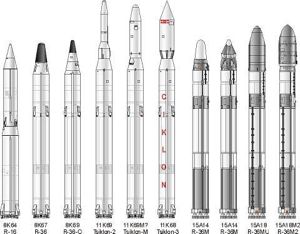 |
R-36 Family |
|---|
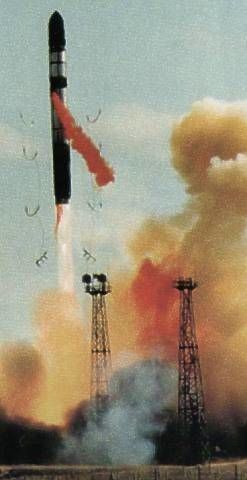 |
R-36M Launch |
|---|
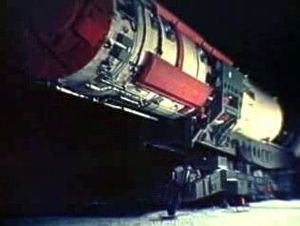 |
DneprDnepr cannisterCredit: Ukrainian Space Agency |
|---|
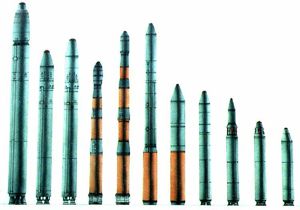 |
ICBM-Derived LVsThe range of launch vehicles derived from decommissioned ballistic missiles offered for sale by Russia after the cold war.Credit: © Mark Wade |
|---|
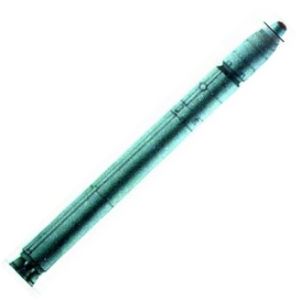 |
RS-20KCredit: © Mark Wade |
|---|
1971 October 22 - . Launch Site: Baikonur. Launch Complex: Baikonur LC67/21. LV Family: R-36M. Launch Vehicle: R-36M 15A14.
1971 November 3 - . Launch Site: Baikonur. Launch Complex: Baikonur LC67/21. LV Family: R-36M. Launch Vehicle: R-36M 15A14.
1971 December 7 - . Launch Site: Baikonur. Launch Complex: Baikonur LC67/21. LV Family: R-36M. Launch Vehicle: R-36M 15A14.
1971 December 29 - . Launch Site: Baikonur. Launch Complex: Baikonur LC67/21. LV Family: R-36M. Launch Vehicle: R-36M 15A14.
1972 March 6 - . Launch Site: Baikonur. Launch Complex: Baikonur LC67/21. LV Family: R-36M. Launch Vehicle: R-36M 15A14.
1972 April 29 - . Launch Site: Baikonur. Launch Complex: Baikonur LC67/21. LV Family: R-36M. Launch Vehicle: R-36M 15A14.
1972 June 8 - . Launch Site: Baikonur. Launch Complex: Baikonur LC67/21. LV Family: R-36M. Launch Vehicle: R-36M 15A14.
1972 August 18 - . Launch Site: Baikonur. Launch Complex: Baikonur LC67/21. LV Family: R-36M. Launch Vehicle: R-36M 15A14.
1972 October 19 - . Launch Site: Baikonur. Launch Complex: Baikonur LC104. LV Family: R-36M. Launch Vehicle: R-36M 15A14. FAILURE: Failure.
1972 December 29 - . Launch Site: Baikonur. Launch Complex: Baikonur LC104. LV Family: R-36M. Launch Vehicle: R-36M 15A14. FAILURE: Failure.
1973 February 21 - . Launch Site: Baikonur. Launch Complex: Baikonur LC101. LV Family: R-36M. Launch Vehicle: R-36M 15A14.
1973 April 6 - . Launch Site: Baikonur. Launch Complex: Baikonur LC104. LV Family: R-36M. Launch Vehicle: R-36M 15A14.
1973 April 29 - . Launch Site: Baikonur. Launch Complex: Baikonur LC103. LV Family: R-36M. Launch Vehicle: R-36M 15A14.
1973 May 24 - . Launch Site: Baikonur. Launch Complex: Baikonur LC101. LV Family: R-36M. Launch Vehicle: R-36M 15A14. FAILURE: Failure.
1973 June 16 - . Launch Site: Baikonur. Launch Complex: Baikonur LC104. LV Family: R-36M. Launch Vehicle: R-36M 15A14.
1973 July 4 - . Launch Site: Baikonur. Launch Complex: Baikonur LC140/18. LV Family: R-36M. Launch Vehicle: R-36M 15A14.
1973 July 30 - . Launch Site: Baikonur. Launch Complex: Baikonur LC103. LV Family: R-36M. Launch Vehicle: R-36M 15A14.
1973 August 15 - . Launch Site: Baikonur. Launch Complex: Baikonur LC101. LV Family: R-36M. Launch Vehicle: R-36M 15A14.
1973 September 3 - . Launch Site: Baikonur. Launch Complex: Baikonur LC104. LV Family: R-36M. Launch Vehicle: R-36M 15A14.
1973 September 12 - . Launch Site: Baikonur. Launch Complex: Baikonur LC140/18. LV Family: R-36M. Launch Vehicle: R-36M 15A14. FAILURE: Failure.
1973 October 12 - . Launch Site: Baikonur. Launch Complex: Baikonur LC101. LV Family: R-36M. Launch Vehicle: R-36M 15A14. FAILURE: Failure.
1973 November 5 - . Launch Site: Baikonur. Launch Complex: Baikonur LC103. LV Family: R-36M. Launch Vehicle: R-36M 15A14.
1973 November 20 - . Launch Site: Baikonur. Launch Complex: Baikonur LC104. LV Family: R-36M. Launch Vehicle: R-36M 15A14.
1973 December 17 - . Launch Site: Baikonur. Launch Complex: Baikonur LC140/18. LV Family: R-36M. Launch Vehicle: R-36M 15A14.
1973 December 26 - . Launch Site: Baikonur. Launch Complex: Baikonur LC101. LV Family: R-36M. Launch Vehicle: R-36M 15A14.
1974 January 20 - . Launch Site: Baikonur. Launch Complex: Baikonur LC103. LV Family: R-36M. Launch Vehicle: R-36M 15A14.
1974 February 13 - . Launch Site: Baikonur. Launch Complex: Baikonur LC140/18. LV Family: R-36M. Launch Vehicle: R-36M 15A14. FAILURE: Failure.
1974 February 21 - . Launch Site: Baikonur. Launch Complex: Baikonur LC104. LV Family: R-36M. Launch Vehicle: R-36M 15A14.
1974 February 24 - . Launch Site: Baikonur. Launch Complex: Baikonur LC101. LV Family: R-36M. Launch Vehicle: R-36M 15A14.
1974 April 27 - . Launch Site: Baikonur. Launch Complex: Baikonur LC105. LV Family: R-36M. Launch Vehicle: R-36M 15A14. FAILURE: Failure.
1974 June 24 - . Launch Site: Baikonur. Launch Complex: Baikonur LC106. LV Family: R-36M. Launch Vehicle: R-36M 15A14.
1974 July 4 - . Launch Site: Baikonur. Launch Complex: Baikonur LC109. LV Family: R-36M. Launch Vehicle: R-36M 15A14.
1974 July 26 - . Launch Site: Baikonur. Launch Complex: Baikonur LC140/18. LV Family: R-36M. Launch Vehicle: R-36M 15A14.
1974 August 19 - . Launch Site: Baikonur. Launch Complex: Baikonur LC105. LV Family: R-36M. Launch Vehicle: R-36M 15A14.
1974 August 30 - . Launch Site: Baikonur. Launch Complex: Baikonur LC109. LV Family: R-36M. Launch Vehicle: R-36M 15A14.
1974 September 10 - . Launch Site: Baikonur. Launch Complex: Baikonur LC106. LV Family: R-36M. Launch Vehicle: R-36M 15A14.
1974 October 7 - . Launch Site: Baikonur. Launch Complex: Baikonur LC104. LV Family: R-36M. Launch Vehicle: R-36M 15A14.
1974 October 23 - . Launch Site: Baikonur. Launch Complex: Baikonur LC109. LV Family: R-36M. Launch Vehicle: R-36M 15A14.
1974 November 12 - . Launch Site: Baikonur. Launch Complex: Baikonur LC103. LV Family: R-36M. Launch Vehicle: R-36M 15A14. FAILURE: Failure.
1974 December 11 - . Launch Site: Baikonur. Launch Complex: Baikonur LC105. LV Family: R-36M. Launch Vehicle: R-36M 15A14.
1974 December 17 - . Launch Site: Baikonur. Launch Complex: Baikonur LC106. LV Family: R-36M. Launch Vehicle: R-36M 15A14.
1974 December 23 - . Launch Site: Baikonur. Launch Complex: Baikonur LC104. LV Family: R-36M. Launch Vehicle: R-36M 15A14.
1974 December 25 - . Launch Site: Baikonur. Launch Complex: Baikonur LC109. LV Family: R-36M. Launch Vehicle: R-36M 15A14.
1974 December 29 - . Launch Site: Baikonur. Launch Complex: Baikonur LC103. LV Family: R-36M. Launch Vehicle: R-36M 15A14. FAILURE: Failure.
1975 February 4 - . Launch Site: Baikonur. Launch Complex: Baikonur LC140/18. LV Family: R-36M. Launch Vehicle: R-36M 15A14.
1975 February 26 - . Launch Site: Baikonur. Launch Complex: Baikonur LC109. LV Family: R-36M. Launch Vehicle: R-36M 15A14.
1975 March 18 - . Launch Site: Baikonur. Launch Complex: Baikonur LC103. LV Family: R-36M. Launch Vehicle: R-36M 15A14.
1975 March 30 - . Launch Site: Baikonur. Launch Complex: Baikonur LC105. LV Family: R-36M. Launch Vehicle: R-36M 15A14.
1975 April 24 - . Launch Site: Baikonur. Launch Complex: Baikonur LC106. LV Family: R-36M. Launch Vehicle: R-36M 15A14.
1975 May 28 - . Launch Site: Baikonur. Launch Complex: Baikonur LC105. LV Family: R-36M. Launch Vehicle: R-36M 15A14.
1975 June 4 - . Launch Site: Baikonur. Launch Complex: Baikonur LC101. LV Family: R-36M. Launch Vehicle: R-36M 15A14.
1975 June 7 - . Launch Site: Baikonur. Launch Complex: Baikonur LC109. LV Family: R-36M. Launch Vehicle: R-36M 15A14.
1975 June 30 - . Launch Site: Baikonur. Launch Complex: Baikonur LC140/18. LV Family: R-36M. Launch Vehicle: R-36M 15A14.
1975 August 16 - . Launch Site: Baikonur. Launch Complex: Baikonur LC106. LV Family: R-36M. Launch Vehicle: R-36M 15A14.
1975 August 26 - . Launch Site: Baikonur. Launch Complex: Baikonur LC109. LV Family: R-36M. Launch Vehicle: R-36M 15A14.
1975 August 27 - . Launch Site: Baikonur. Launch Complex: Baikonur LC105. LV Family: R-36M. Launch Vehicle: R-36M 15A14.
1975 September 29 - . Launch Site: Baikonur. Launch Complex: Baikonur LC103. LV Family: R-36M. Launch Vehicle: R-36M 15A14.
1975 October 1 - . Launch Site: Baikonur. Launch Complex: Baikonur LC101. LV Family: R-36M. Launch Vehicle: R-36M 15A14.
1976 January 30 - . Launch Site: Baikonur. Launch Complex: Baikonur LC103. LV Family: R-36M. Launch Vehicle: R-36M 15A14.
1976 February 12 - . Launch Site: Baikonur. Launch Complex: Baikonur LC140/18. LV Family: R-36M. Launch Vehicle: R-36M 15A14.
1976 February 18 - . Launch Site: Baikonur. Launch Complex: Baikonur LC101. LV Family: R-36M. Launch Vehicle: R-36M 15A14.
1976 May 17 - . Launch Site: Baikonur. Launch Complex: Baikonur LC105. LV Family: R-36M. Launch Vehicle: R-36M 15A14.
1976 June 9 - . Launch Site: Baikonur. Launch Complex: Baikonur LC106. LV Family: R-36M. Launch Vehicle: R-36M 15A14.
1976 June 29 - . Launch Site: Baikonur. Launch Complex: Baikonur LC103. LV Family: R-36M. Launch Vehicle: R-36M 15A14.
1976 September 3 - . Launch Site: Baikonur. Launch Complex: Baikonur LC109. LV Family: R-36M. Launch Vehicle: R-36M 15A14.
1976 December 28 - . Launch Site: Baikonur. Launch Complex: Baikonur LC106. LV Family: R-36M. Launch Vehicle: R-36M 15A14.
1977 February 3 - . Launch Site: Baikonur. Launch Complex: Baikonur LC103. LV Family: R-36M. Launch Vehicle: R-36M 15A14.
1977 March 17 - . Launch Site: Baikonur. Launch Complex: Baikonur LC105. LV Family: R-36M. Launch Vehicle: R-36M 15A14.
1977 May 17 - . Launch Site: Baikonur. Launch Complex: Baikonur LC109. LV Family: R-36M. Launch Vehicle: R-36M 15A14.
1977 May 28 - . Launch Site: Baikonur. Launch Complex: Baikonur LC105. LV Family: R-36M. Launch Vehicle: R-36M 15A14.
1977 November 29 - . Launch Site: Baikonur. Launch Complex: Baikonur LC109. LV Family: R-36M. Launch Vehicle: R-36M 15A14.
1977 December 27 - . Launch Site: Baikonur. Launch Complex: Baikonur LC140/18. LV Family: R-36M. Launch Vehicle: R-36M 15A14.
1977 December 30 - . Launch Site: Baikonur. Launch Complex: Baikonur LC109. LV Family: R-36M. Launch Vehicle: R-36M 15A14.
1978 February 11 - . Launch Site: Baikonur. Launch Complex: Baikonur LC109. LV Family: R-36M. Launch Vehicle: R-36M 15A14.
1978 February 15 - . Launch Site: Baikonur. Launch Complex: Baikonur LC140/18. LV Family: R-36M. Launch Vehicle: R-36M 15A14.
1978 June 14 - . Launch Site: Baikonur. Launch Complex: Baikonur LC109. LV Family: R-36M. Launch Vehicle: R-36M 15A14.
1978 June 29 - . Launch Site: Baikonur. Launch Complex: Baikonur LC102. LV Family: R-36M. Launch Vehicle: R-36M 15A14.
1978 July 29 - . Launch Site: Baikonur. Launch Complex: Baikonur LC106. LV Family: R-36M. Launch Vehicle: R-36M 15A14.
1978 September 12 - . Launch Site: Baikonur. Launch Complex: Baikonur LC140/18. LV Family: R-36M. Launch Vehicle: R-36M 15A14.
1978 December 21 - . Launch Site: Baikonur. Launch Complex: Baikonur LC106. LV Family: R-36M. Launch Vehicle: R-36M 15A14.
1979 April 19 - . Launch Site: Baikonur. Launch Complex: Baikonur LC106. LV Family: R-36M. Launch Vehicle: R-36M 15A14.
1980 March 6 - . Launch Site: Baikonur. Launch Complex: Baikonur LC109. LV Family: R-36M. Launch Vehicle: R-36M 15A14.
1980 April 25 - . Launch Site: Baikonur. Launch Complex: Baikonur LC106. LV Family: R-36M. Launch Vehicle: R-36M 15A14.
1980 July 4 - . Launch Site: Baikonur. Launch Complex: Baikonur LC109. LV Family: R-36M. Launch Vehicle: R-36M 15A14.
1980 August 29 - . Launch Site: Baikonur. Launch Complex: Baikonur LC106. LV Family: R-36M. Launch Vehicle: R-36M 15A14.
1980 November 27 - . Launch Site: Baikonur. LV Family: R-36M. Launch Vehicle: R-36M 15A14.
- OT? - . Nation: Kazakhstan. Agency: RVSN. Apogee: 1,000 km (600 mi).
1981 February 10 - . Launch Site: Uzhur. LV Family: R-36M. Launch Vehicle: R-36M 15A14.
- ICBM operational test launch from missile base silo - . Nation: Russia. Agency: RVSN. Apogee: 1,000 km (600 mi).
1981 February 11 - . Launch Site: Uzhur. LV Family: R-36M. Launch Vehicle: R-36M 15A14.
- ICBM operational test launch from missile base silo - . Nation: Russia. Agency: RVSN. Apogee: 1,000 km (600 mi).
1981 March 5 - . Launch Site: Uzhur. LV Family: R-36M. Launch Vehicle: R-36M 15A14.
- ICBM operational test launch from missile base silo - . Nation: Russia. Agency: RVSN. Apogee: 1,000 km (600 mi).
1981 March 5 - . Launch Site: Uzhur. LV Family: R-36M. Launch Vehicle: R-36M 15A14.
- ICBM operational test launch from missile base silo - . Nation: Russia. Agency: RVSN. Apogee: 1,000 km (600 mi).
1981 March 6 - . Launch Site: Uzhur. LV Family: R-36M. Launch Vehicle: R-36M 15A14.
- ICBM operational test launch from missile base silo - . Nation: Russia. Agency: RVSN. Apogee: 1,000 km (600 mi).
1981 April 1 - . Launch Site: Kartaly. LV Family: R-36M. Launch Vehicle: R-36M 15A14.
- ICBM operational test launch from missile base silo - . Nation: Russia. Agency: RVSN. Apogee: 1,000 km (600 mi).
1981 April 28 - . Launch Site: Kartaly. LV Family: R-36M. Launch Vehicle: R-36M 15A14.
- ICBM operational test launch from missile base silo - . Nation: Russia. Agency: RVSN. Apogee: 1,000 km (600 mi).
1981 April 29 - . Launch Site: Kartaly. LV Family: R-36M. Launch Vehicle: R-36M 15A14.
- ICBM operational test launch from missile base silo - . Nation: Russia. Agency: RVSN. Apogee: 1,000 km (600 mi).
1982 July 15 - . Launch Site: Baikonur. Launch Complex: Baikonur LC109. LV Family: R-36M. Launch Vehicle: R-36M 15A14.
1982 August 12 - . Launch Site: Baikonur. Launch Complex: Baikonur LC106. LV Family: R-36M. Launch Vehicle: R-36M 15A14.
1982 December 23 - . Launch Site: Baikonur. Launch Complex: Baikonur LC109. LV Family: R-36M. Launch Vehicle: R-36M 15A14.
1983 February 17 - . Launch Site: Baikonur. Launch Complex: Baikonur LC106. LV Family: R-36M. Launch Vehicle: R-36M 15A14.
1983 March 30 - . Launch Site: Baikonur. Launch Complex: Baikonur LC106. LV Family: R-36M. Launch Vehicle: R-36M 15A14.
1983 July 14 - . Launch Site: Baikonur. Launch Complex: Baikonur LC109. LV Family: R-36M. Launch Vehicle: R-36M 15A14.
1983 July 19 - . Launch Site: Derzhavinsk. LV Family: R-36M. Launch Vehicle: R-36M 15A14.
- ICBM operational test launch from missile base silo - . Nation: Kazakhstan. Agency: RVSN. Apogee: 1,000 km (600 mi).
1983 October 11 - . Launch Site: Baikonur. Launch Complex: Baikonur LC109. LV Family: R-36M. Launch Vehicle: R-36M 15A14.
1984 - . Launch Site: Kartaly. LV Family: R-36M. Launch Vehicle: R-36M 15A14.
Home - Search - Browse - Alphabetic Index: 0- 1- 2- 3- 4- 5- 6- 7- 8- 9
A- B- C- D- E- F- G- H- I- J- K- L- M- N- O- P- Q- R- S- T- U- V- W- X- Y- Z
© 1997-2019 Mark Wade - Contact
© / Conditions for Use
